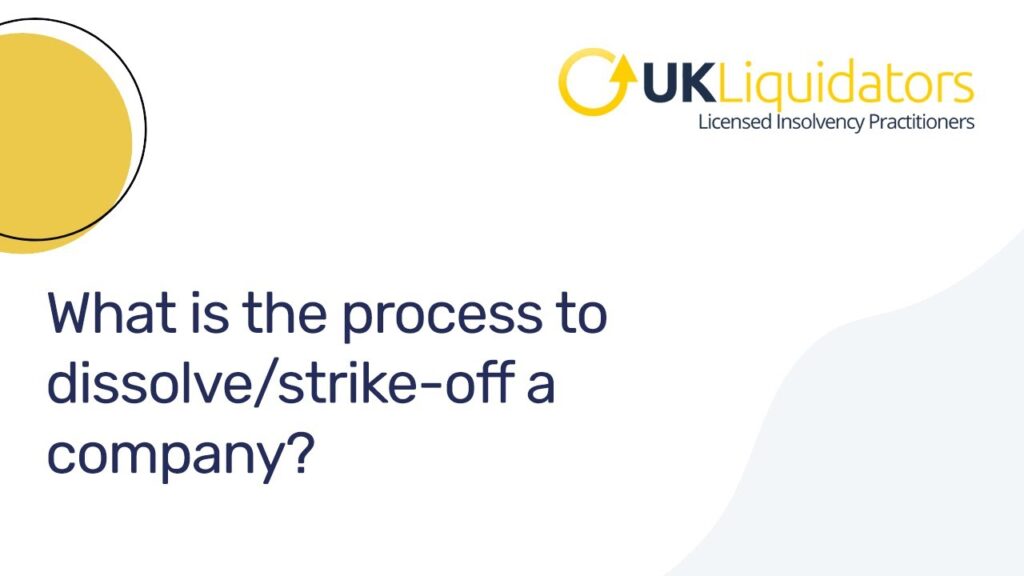Navigating the First Gazette Notice for Compulsory Strike Off
Navigating the First Gazette Notice for Compulsory Strike Off
Blog Article
A Comprehensive Overview to the Compulsory Strike Off Procedure in Corporate Administration
Navigating the elaborate landscape of company administration needs a keen understanding of the procedures that control the dissolution of entities. The mandatory strike off procedure, an essential element in company administration, works as a mechanism to impose compliance and preserve the honesty of the business setting. As businesses progress and situations adjustment, the demand to strike off a company might emerge for different factors. Checking out the intricacies of this process, including the legal ramifications, procedural steps, and post-strike off considerations, provides very useful insights for stakeholders looking for to navigate the intricacies of company administration.

Reasons for Compulsory Strike Off
What conditions lead to the requirement of a compulsory strike off in business governance? There are several crucial factors that may trigger the initiation of a compulsory strike off treatment for a company. One common circumstance is when a company falls short to abide by its legal responsibilities, such as submitting annual returns or monetary statements to the relevant authorities. Non-compliance with governing requirements can elevate issues about the business's operations and economic health and wellness, resulting in the decision to strike off the business from the register.
In addition, business that have actually stopped trading or are no longer executing any company activities might also deal with required strike off. This could be because of bankruptcy, mergers, or merely a choice to wind up the business. In such situations, maintaining the business on the register would certainly serve no objective and could potentially develop complication amongst stakeholders.
Inevitably, the necessity of an obligatory strike off in company governance emerges when a company is no more running according to the legislation or has come to be inoperative, requiring its elimination from the official documents.
Lawful Effects and Dangers
Given the situations that motivate a required strike off in business administration, it is vital to recognize the lawful effects and risks connected with such activities. When a company is struck off the main register, it disappears as a legal entity. This can have major effects for directors, financial institutions, and shareholders. Directors might face individual liability for business financial obligations sustained after the dissolution, revealing their possessions to potential seizure. Shareholders lose their investment in the company, and financial institutions may find it challenging to recover financial obligations owed to them.
Moreover, there are lawful consequences for individuals involved in the management of a company that has actually been forcibly struck off. In addition, the reputational damages from an obligatory strike off can have lasting impacts on individuals and their capacity to involve in future company ventures.
Action In the Strike Off Process
Launching the mandatory strike off procedure in corporate governance entails a collection of recommended actions detailed by regulatory authorities. The initial action commonly calls for the company to send a formal application or notification to the relevant federal government agency or registrar signaling its intent to be struck off the main register. Subsequently, the business is often called for to resolve any kind of superior responsibilities, financial debts, or see post taxes to guarantee conformity with governing needs.
Once the preliminary documentation is submitted and monetary responsibilities are met, the governing body will certainly release a notification in the official gazette or a comparable publication to educate stakeholders concerning the approaching strike off - compulsory strike off. More hints This notice acts as a last possibility for any kind of interested events to elevate objections or existing legitimate reasons why the firm must not be dissolved
Adhering to the publication of the notification, the regulatory authority will wage the strike off process if no significant objections or barriers develop. The firm will after that be officially liquified, and its name will certainly be gotten rid of from the register, successfully marking the conclusion of the obligatory strike off treatment in corporate governance.
Records Required for Strike Off
In conformity with regulative standards, specific documents must be provided to facilitate the strike off procedure in corporate administration. The called for papers typically consist of an official application for strike off, which requires to be completed precisely and submitted to the pertinent regulatory authority. In addition, financial declarations, such as the company's most recent annual report, must be included to make sure that all economic commitments have actually been resolved prior to launching the strike off treatment. Furthermore, a declaration of solvency or a declaration confirming that the company has no impressive obligations is typically mandated to show that the entity can be dissolved without triggering harm to its lenders. Any kind of needed authorizations from shareholders or board members must be documented and confined with the application. It is important to make sure that all the requisite paperwork is meticulously ready and sent according to the suggested standards to expedite the strike off process effectively. Failing to supply the required documentation might lead to delays or complications in the this link dissolution of the business.
Post-Strike Off Commitments and Considerations
Adhering to the conclusion of the required documentation for strike off, interest shifts to the post-strike off obligations and considerations that are important in the company administration process. As soon as a business has actually been struck off the register, it is crucial to make sure that all remaining assets are handled properly. This consists of distributing any remaining funds among shareholders and settling any arrearages or responsibilities. Furthermore, business directors should make certain that all tax obligations are met, last staff member payments are made, and that all required filings are finished with pertinent regulative bodies.

Conclusion
Finally, the obligatory strike off procedure in business governance functions as a needed mechanism to remove inoperative firms from the register. Understanding the factors, lawful ramifications, steps, and records required for strike off is critical for conformity with regulative needs. It is crucial for business to fulfill their post-strike off commitments and take into consideration the effects of this procedure in order to preserve excellent standing and avoid possible threats.
There are several crucial reasons that may motivate the initiation of a required strike off procedure for a firm (what is compulsory strike off). Non-compliance with governing needs can increase problems regarding the company's procedures and financial wellness, leading to the choice to strike off the business from the register

Report this page